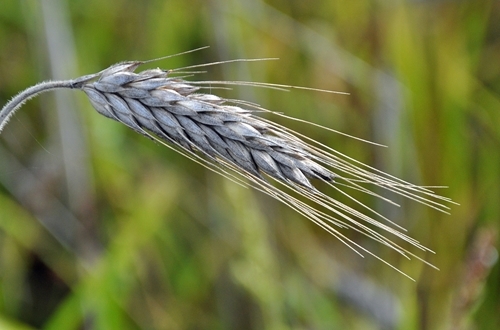
This summer, GWCT scientists were working near Exmoor, looking at the effect that winter game crop plots may have had on breeding songbirds the subsequent spring. The results are still in analysis, but the findings that are coming out of the work look to be very interesting, as well as good news for farmland birds in areas where shoots invest money in game crop plots to support their released gamebirds.
It was already known that game crop plots can be a very valuable food source for farmland birds throughout the winter, when food can be scarce elsewhere in the modern farmed landscape. Game crops provide both food in the form of seeds or insects, as well as cover during these lean times for birds and other wildlife.
However, this year’s work looked at whether this beneficial effect in winter continued to help breeding songbirds in the spring, even after the game crops themselves were no longer present. Is it the case that helping support birds through their tougher times has a lasting benefit later on? And if so, how far from the game crops do birds benefit?
The answer appears to be yes. Our scientists carefully designed the study to carry out monitoring along survey lines (transects) extending out from where game crop plots had been sited the previous winter, having chosen the transects randomly across the landscape. Along these, hedgerows were chosen – also at random – at different distances from the plots. This randomness is very important in study design, because it is otherwise very easy to allow subconscious bias to creep in. If you are in the field, choosing the hedgerow to survey yourself from those in front of you, those that look good quality are just more tempting.
Breeding bird surveys were carried out both for game plots that had been in use the previous winter, and also for previous game plot sites that had not been used that year – to provide a reference for comparison. This makes sure that any effect seen was really down to the presence or absence of game crop resources, rather than anything else – for example the sort of area in a landscape in which game crops tend to be sited.
Our preliminary findings suggest a clear effect, with many more birds breeding in hedgerows within 150m of an active game crop plot at the height of the breeding season in April/May, compared to those over 500m away. Later on in the year, in the May/June surveys, this effect was still there but slightly less marked. The characteristics of the hedgerows were the same, and this pattern was not seen in surveys around game crop plots that had not been used the previous winter.
These are still initial findings – data analysis continues, and the results are still to be written up for publication, but the trends that are beginning to emerge are clear. In today’s farmed landscape, game crop plots can provide an invaluable source of food and cover for farmland birds in winter, which continues to help support them breeding in the spring.
The landscape in which this study was done is predominantly one of livestock farming – being almost entirely improved pasture, with some woodland (much of which is used and retained for game management), a little arable and the game crop plots we studied. Areas like this are very poor for farmland birds in general, with very limited resources. This means that the number of species we saw in this study was low, and there were very few birds overall – even in the areas where game crop plots and other variety in the landscape appeared to be helping them.
In the context of the ongoing declines we have seen in farmland bird numbers for decades, and the many targets to halt and reverse biodiversity loss which are set and almost inevitably missed, simple actions such as these must form part of the strategy to help support the creatures we share our countryside with.